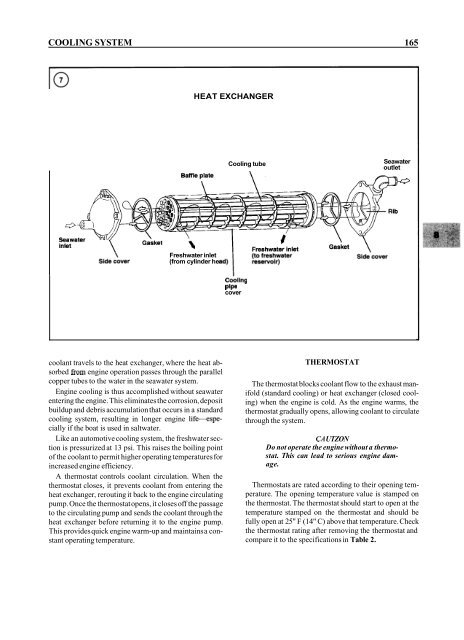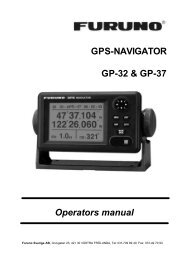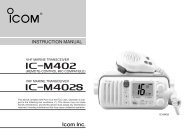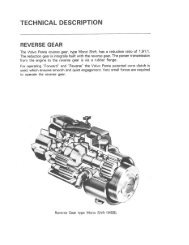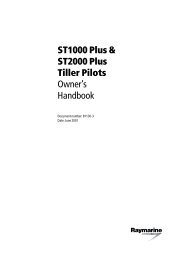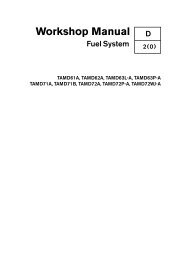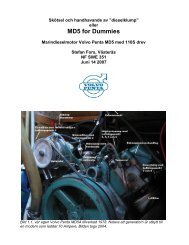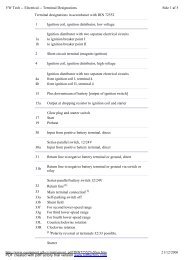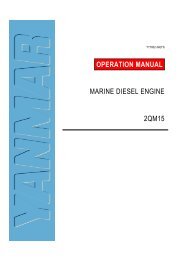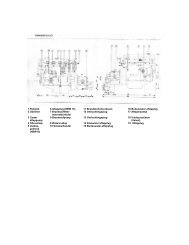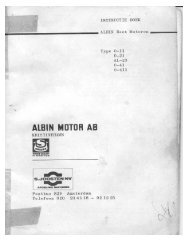You also want an ePaper? Increase the reach of your titles
YUMPU automatically turns print PDFs into web optimized ePapers that Google loves.
COOLING SYSTEM 165<br />
HEAT EXCHANGER<br />
Cooling tube<br />
Seawater<br />
outlet<br />
Freshwater inlet<br />
(from cylinder he<br />
cooling<br />
Pipe<br />
cover<br />
coolant travels to the heat exchanger, where the heat absorbed<br />
from engine operation passes through the parallel<br />
copper tubes to the water in the seawater system.<br />
Engine cooling is thus accomplished without seawater<br />
entering the engine. This eliminates the corrosion, deposit<br />
buildup and debris accumulation that occurs in a standard<br />
cooling system, resulting in longer engine life--especially<br />
if the boat is used in saltwater.<br />
Like an automotive cooling system, the freshwater section<br />
is pressurized at 13 psi. This raises the boiling point<br />
of the coolant to permit higher operating temperatures for<br />
increased engine efficiency.<br />
A thermostat controls coolant circulation. When the<br />
thermostat closes, it prevents coolant from entering the<br />
heat exchanger, rerouting it back to the engine circulating<br />
pump. Once the thermostat opens, it closes off the passage<br />
to the circulating pump and sends the coolant through the<br />
heat exchanger before returning it to the engine pump.<br />
This provides quick engine warm-up and maintains a constant<br />
operating temperature.<br />
THERMOSTAT<br />
The thermostat blocks coolant flow to the exhaust manifold<br />
(standard cooling) or heat exchanger (closed cooling)<br />
when the engine is cold. As the engine warms, the<br />
thermostat gradually opens, allowing coolant to circulate<br />
through the system.<br />
CA UTZON<br />
Do not operate the engine without a thermostat.<br />
This can lead to serious engine damage.<br />
Thermostats are rated according to their opening temperature.<br />
The opening temperature value is stamped on<br />
the thermostat. The thermostat should start to open at the<br />
temperature stamped on the thermostat and should be<br />
fully open at 25" F (14" C) above that temperature. Check<br />
the thermostat rating after removing the thermostat and<br />
compare it to the specifications in Table 2.


